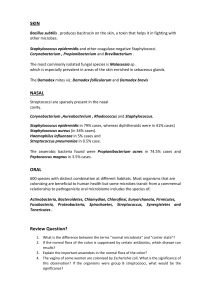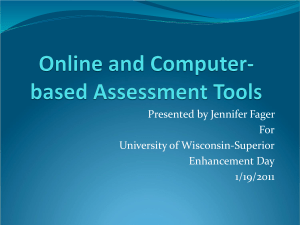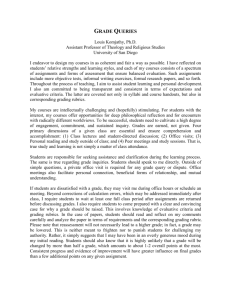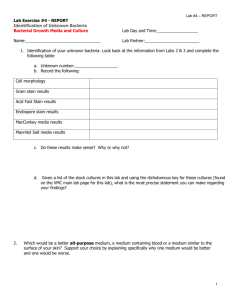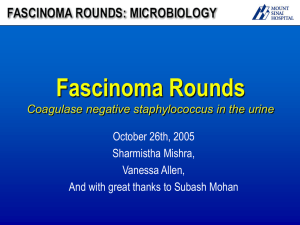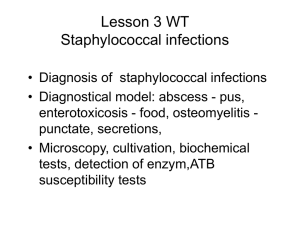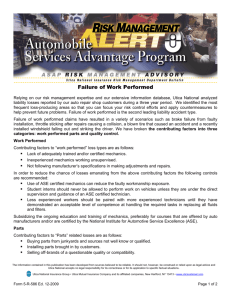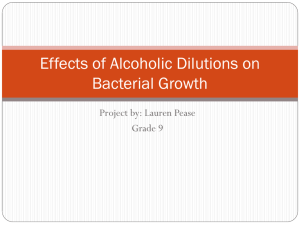Assessing Student Learning Through Independent
advertisement
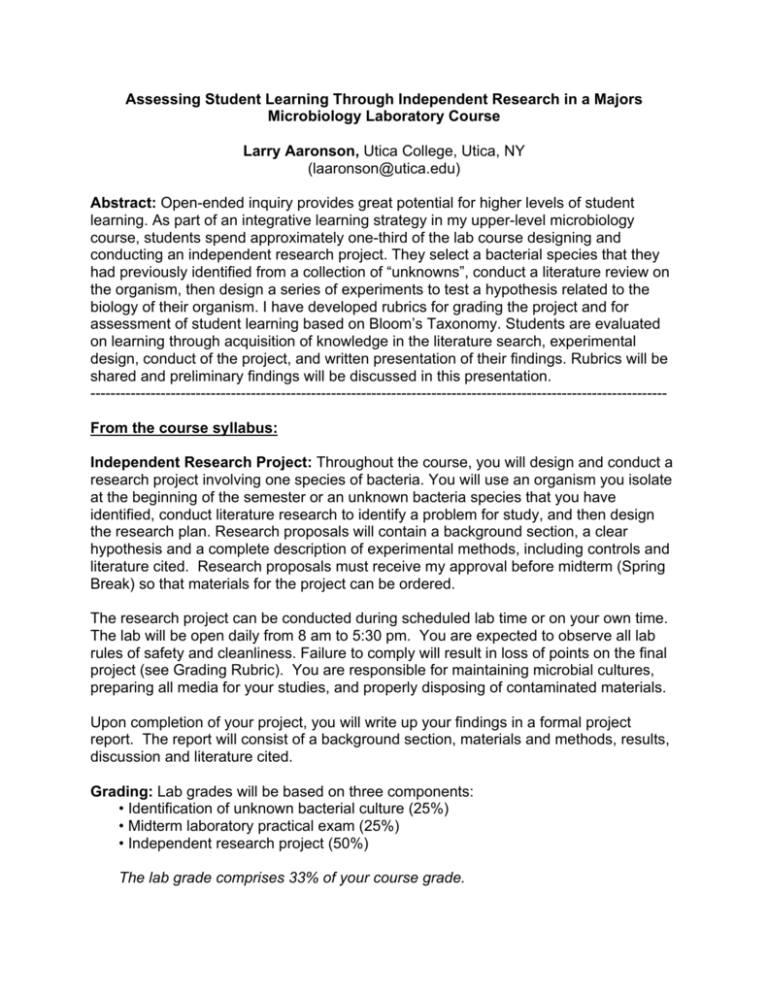
Assessing Student Learning Through Independent Research in a Majors Microbiology Laboratory Course Larry Aaronson, Utica College, Utica, NY (laaronson@utica.edu) Abstract: Open-ended inquiry provides great potential for higher levels of student learning. As part of an integrative learning strategy in my upper-level microbiology course, students spend approximately one-third of the lab course designing and conducting an independent research project. They select a bacterial species that they had previously identified from a collection of “unknowns”, conduct a literature review on the organism, then design a series of experiments to test a hypothesis related to the biology of their organism. I have developed rubrics for grading the project and for assessment of student learning based on Bloom’s Taxonomy. Students are evaluated on learning through acquisition of knowledge in the literature search, experimental design, conduct of the project, and written presentation of their findings. Rubrics will be shared and preliminary findings will be discussed in this presentation. ------------------------------------------------------------------------------------------------------------------From the course syllabus: Independent Research Project: Throughout the course, you will design and conduct a research project involving one species of bacteria. You will use an organism you isolate at the beginning of the semester or an unknown bacteria species that you have identified, conduct literature research to identify a problem for study, and then design the research plan. Research proposals will contain a background section, a clear hypothesis and a complete description of experimental methods, including controls and literature cited. Research proposals must receive my approval before midterm (Spring Break) so that materials for the project can be ordered. The research project can be conducted during scheduled lab time or on your own time. The lab will be open daily from 8 am to 5:30 pm. You are expected to observe all lab rules of safety and cleanliness. Failure to comply will result in loss of points on the final project (see Grading Rubric). You are responsible for maintaining microbial cultures, preparing all media for your studies, and properly disposing of contaminated materials. Upon completion of your project, you will write up your findings in a formal project report. The report will consist of a background section, materials and methods, results, discussion and literature cited. Grading: Lab grades will be based on three components: • Identification of unknown bacterial culture (25%) • Midterm laboratory practical exam (25%) • Independent research project (50%) The lab grade comprises 33% of your course grade. Examples of Research Projects • Effect of mouthwashes on biofilm formation of Neisseria subflava • Comparison of plain antibiotic-infused Band-Aids on growth of Staphylococcus epidermidis • Thermal stability of Serratia marcescens protease • Synergistic effects of caffeine and cranberry juice on growth of Proteus vulgaris • Effects of glucose concentration on adhesion and biofilm development in Staphylococcus epidermidis • Antimicrobial effects of heavy metal salts on Micrococcus luteus • Adhesion of Salmonella typhimurium to different materials found in kitchens • Antimicrobial effects of violacein from Chromobacterium violaceum • Induction of swarming motility in Bacillus cereus by milk • Effects of Staphylococcus epidermidis on wild-type and Huntington’s disease transgenic strains of Drosophila melanogaster • Utilization of tannic acid as a carbon source by Citrobacter freundii

